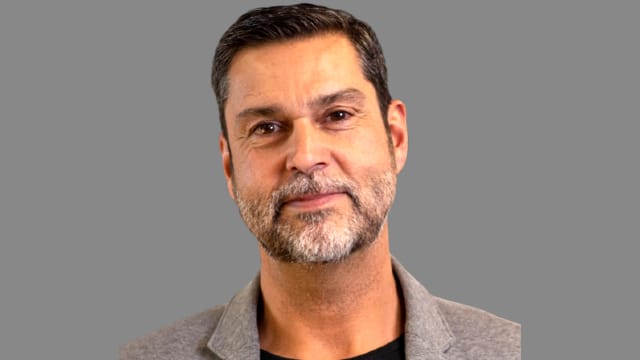However, the holiday may be over.
Amazon appears set to take a bigger share of the market after doubling its distribution capacity this year to more than 330,000 square metres, expanding its product range by 60 per cent to 200 million items across 31 categories, and launching in August free one-day delivery for Prime members in Sydney and Melbourne.
While online sales have retreated at pure-play and omnichannel retailers in recent months, after booming during lockdowns, analysts believe Amazon’s Australian sales are still growing by double digits after soaring 56 per cent to $1.8 billion in 2021, double the growth in the wider e-commerce market.
Amazon’s gross merchandise value, which includes sales from third-party sellers, is estimated to be as high as $2.6 billion, two or three times that at home-grown marketplaces Kogan.com and Catch.
“It does look like they’re materially outperforming every other online pure-play of scale in the Australian market at the moment,” says Jarden analyst Ben Gilbert.
He believes Amazon.com.au is set to overtake eBay as Australia’s number one retail site, in terms of customer traffic, in the next 12 months.
Analysts estimate Amazon’s $500 million, 200,000 square metre robotics fulfilment centre in Sydney’s west, which opened in April, has increased its gross merchandise volume (GMV) capacity to $6 billion or $7 billion. The centre is within 12 hours’ delivery time of 80 per cent of Australia’s population, enabling Amazon to offer next-day delivery to more customers.
Boosting capacity
Amazon is believed to be scouting for another 200,000 square metre robotics fulfilment centre in Victoria, which would boost its capacity to between $8 billion and $10 billion of GMV, surpassing eBay and eclipsing the online sales of omnichannel retailers Wesfarmers and Woolworths.
If Amazon launches more products and services such as fresh food and delivery of bulky goods, including large appliances and furniture, it will have an even greater impact on a wider number of retailers, including Harvey Norman, The Good Guys and Nick Scali.
Amazon Australia country manager Janet Menzies and director of operations Mindy Espidio-Garcia give little away about Amazon’s plans, but say the company is entering a new phase after investing more than $5.3 billion in Australia over the last decade (including e-commerce, Amazon Web Services, Prime Video and Audible), and $1.9 billion in the last 18 months.
“We’re in this really interesting point in our trajectory,” says Menzies, a consumer goods expert who moved to Australia 15 years ago after working with P&G, McDonald’s and McKinsey in Canada and the US.
“For so long we’ve been building our fundamentals,” says Menzies, who was general manager for Australia and NZ at Cochlear before joining Amazon last year. “We’ve gotten so much better in the last two years. It’s not all the way there yet, but it’s in a good place.”
For Menzies, barriers to growth are not the tyranny of distance or the dispersed population. (Amazon now has fulfilment and logistics centres in Sydney, Melbourne, Perth, Brisbane, Adelaide, the Gold Cost and Newcastle, as well as 900 lockers and counters and hundreds of self-employed Flex delivery drivers).
Long-term focus
“For us the focus is still on the long term,” she says. “If we have good selection, if we have consistent delivery promises, we’re fast and if we have competitive prices, we know that over time we’ll get more customers.”
More than 14,000 Australian suppliers are now selling on Amazon.com.au (6500 of these are selling in 18 Amazon markets overseas), but analysts say there are still gaps in its range because several major domestic and international brands have yet to join the site.
According to Fabio Bertola, Amazon Australia’s former marketplace manager, it usually takes four to six years for leading brands in categories such as consumer electronics, appliances and sports equipment to sign up. As marketplaces grow, brands have more incentive to come on board, he told a Goldman Sachs digital conference in November.
“Vendors are getting much better at including Amazon in their go-to-market strategy – now they really see us as a partner to reach consumers,” Menzies says.
“It’s not a hard sell these days because I think the brands that are on Amazon are seeing the growth that comes from working with us and are reaching new customer segments. It’s got to be part of their overall growth strategies.”
However, Menzies acknowledges that the competition has improved.
“I think there’s a fundamentally different retail environment if you think about seven years ago to what it is now – the competition is really good,” she says.
“I think Amazon has made it a whole lot better. I think a lot of those improvements came from anticipating our arrival as much as from our arrival.”
While online sales penetration has dropped back to about 10.6 per cent of retail spending, and many pure-play retailers such as Kogan are cutting costs and curtailing spending, Amazon Australia is eyeing further expansion.
“When it comes to investing in our operations network we’re going to continue to expand and ensure we offer a broad network,” says Espidio-Garcia, a robotics expert who came to Australia this year after nine years with Amazon in the US.

Amazon has increased its range 60 per cent to 200 million products after opening the 200,000 sq metre fulfilment centre earlier this year. James Brickwood.
“Every time we open a fulfilment centre, a sort centre and a delivery station it enables us to be able to get closer to our customers, deliver for them faster, offer more selection … it gives our small businesses capacity to be able to store items with us.”
To defend their turf, Australian retailers will need to continue to expand their product range, boost fulfilment capacity, reduce delivery times and sharpen their pricing if Amazon becomes the first site shoppers visit to check prices.
Bertola says Woolworths’ new online marketplace, MyDeal, is still offering five to 10-day delivery and Wesfarmers’ Catch, which relies on Australia Post, is delivering in two to five days.
Judging by the popularity of Amazon Prime, which analysts estimate has reached one-third of Australian households, they may also have to invest more in loyalty schemes and content, such as video streaming and music, to match the compelling value of Prime and drive customer engagement.
Industry consolidation also appears inevitable.
Bertola says there is likely to be room in the market for only two or three generalist marketplaces rather half a dozen, while Wesfarmers and Woolworths may need to make further acquisitions to round out their digital ecosystems, which leverage their store networks, digital interactions and data.
“Developing a digital ecosystem will mean Wesfarmers and Woolworths will need to fight Amazon on a few fronts such as data, distribution centre infrastructure and marketing,” MST Marquee analyst Craig Woolford said in a recent report. “We think this battle will add to cost growth and pressure margins over the next three years.”
No domestic retailers have pockets as deep as Amazon where, according to Menzies, capital allocation is based not solely on financial returns but how it would solve problems and improve the lives of customers and sellers.
“Anything that’s happened here, like the launch of Subscribe & Save or the baby registry or advertising or Launchpad, even our robotics fulfilment centre … most of these big things we’ve done in Australia we start backwards from that [premise],” Menzies says.
“We need to make sure we’re comfortable with what we’re investing in, but that’s what it means to be customer obsessed.”
Amazon Australia may never achieve the loftier forecasts made back in 2017 – Morningstar, for example, predicted revenues would reach $24 billion within a decade – but its customer obsession will keep local retail leaders on their toes for the foreseeable future.
Source: news.google.com






